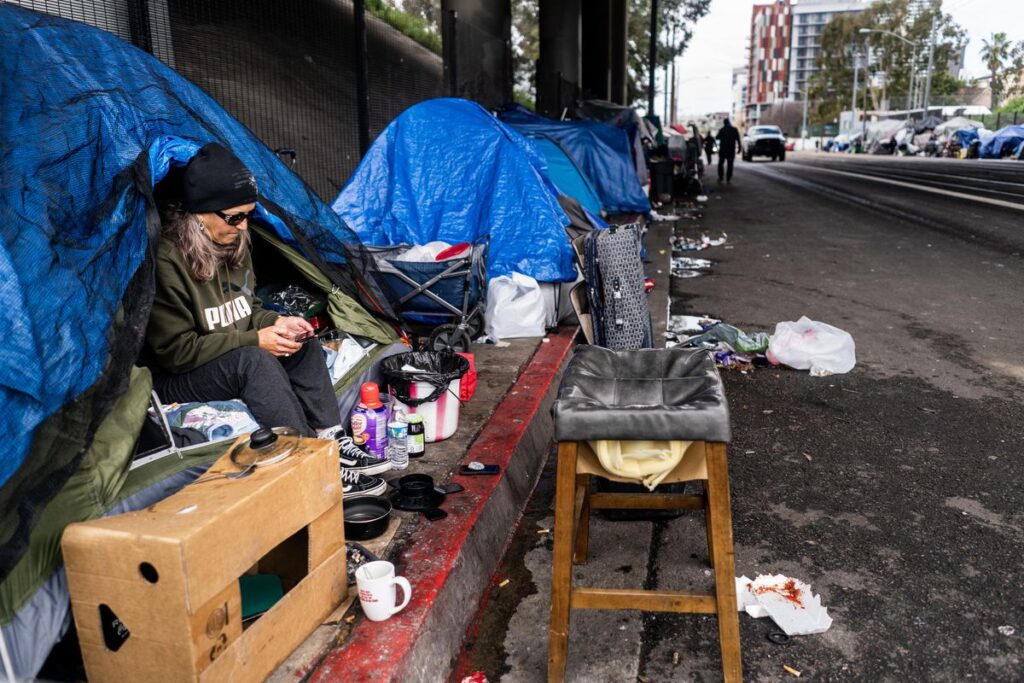Homelessness has emerged as a critical social challenge within the United States, manifesting uniquely across different states. This crisis, affecting individuals and families, urban and rural areas alike, calls for a nuanced understanding of its roots and repercussions. From the bustling streets of New York City to the quieter expanses of rural America, homelessness presents varied faces, each with its own story and set of challenges. This comprehensive overview seeks to shed light on the state-by-state landscape of homelessness, aiming to uncover the multifaceted nature of this issue. By delving into the specifics of how different states are affected by and responding to homelessness, we can begin to piece together a clearer picture of the national crisis at hand.
Understanding the Scope and Impact of Homelessness
The impact of homelessness stretches far beyond the immediate lack of physical shelter, affecting millions of lives across the country. It is a crisis that impacts health, education, and access to employment, creating a cycle of poverty and exclusion that is difficult to break. The scope of homelessness is vast, with recent estimates suggesting that on any given night, hundreds of thousands of people in the United States have no place to call home. These numbers only scratch the surface, failing to fully account for those at risk of homelessness or those who experience it in less visible ways, such as couch surfing or living in temporary accommodations. Understanding the true scope and impact of homelessness is the first step towards addressing its root causes and devising effective solutions.

Factors Contributing to Homelessness Across Different States
Homelessness does not arise in a vacuum, it is the result of a complex interplay of factors that vary significantly across different states. Economic instability, lack of affordable housing, unemployment, mental health issues, and substance abuse are just a few of the contributing factors. However, the weight of these factors can differ greatly from one state to another, influenced by local economies, housing markets, social services, and legislative frameworks. For instance, states with high costs of living and limited affordable housing face distinct challenges compared to those where economic factors play a more significant role. By examining the specific conditions that contribute to homelessness in different states, we can better understand the tailored approaches necessary to combat this crisis effectively.

Homelessness Policies and Programs Implemented by States
Different states have adopted a variety of policies and programs aimed at combating homelessness, reflecting the diverse needs and challenges faced by their populations. Some states prioritize emergency shelter provision and rapid rehousing efforts, while others focus on long-term solutions such as affordable housing development and rental assistance programs. Innovative approaches, like Housing First models, seek to provide homeless individuals with stable housing without preconditions, thereby addressing the root cause of homelessness directly. Additionally, many states have implemented supportive services that address mental health, substance abuse, and job training to aid in the transition to stable living. By analyzing the effectiveness of these varied approaches, states can learn from one another, adopting and adapting policies that have shown success in similar contexts.
Addressing the Needs of Homeless Individuals and Families
Central to any discussion on homelessness is the need to address the specific requirements of homeless individuals and families comprehensively. This includes not only providing immediate shelter but also ensuring access to healthcare, education, and support services that facilitate reintegration into society. Special attention is required for vulnerable populations such as children, veterans, and those with disabilities, who may require targeted support. Nonprofit organizations, community groups, and government agencies play critical roles in delivering these services, often working in partnership to leverage resources and expertise. Understanding and addressing the multifaceted needs of homeless populations is crucial for creating pathways out of homelessness and preventing its occurrence.
Collaborative Efforts to Combat Homelessness at the State Level
The fight against homelessness is most effective when it involves collaboration across various sectors and levels of government. Many states have seen success by forming task forces or coalitions that bring together state agencies, local governments, nonprofit organizations, and the private sector. These collaborative efforts allow for a more coordinated and comprehensive approach to homelessness, combining resources and expertise to develop and implement strategic plans. Sharing best practices, data, and research findings helps in refining strategies and adopting evidence-based interventions. Such partnerships also enhance accountability and ensure that efforts are directed where they are most needed, making the battle against homelessness a shared responsibility.

Success Stories and Challenges in Homelessness Prevention and Intervention
Despite the challenges, there are numerous success stories of states and communities effectively reducing homelessness through innovative and targeted interventions. These success stories often involve a combination of prevention strategies, rapid rehousing programs, and comprehensive support services tailored to the needs of their homeless populations. However, challenges persist, including funding limitations, rising housing costs, and the need for continued support for individuals once they are housed. Learning from both the successes and obstacles encountered by various states can provide valuable insights for developing more effective homelessness prevention and intervention strategies.

Working Towards Solutions to Alleviate Homelessness Across States
Alleviating homelessness across states requires a commitment to understanding its root causes, investing in effective solutions, and fostering collaboration among all stakeholders involved. It necessitates a shift towards preventive measures, affordable housing initiatives, and comprehensive support services that address the underlying issues contributing to homelessness. Encouragingly, the increasing number of success stories provides a blueprint for what can be achieved with targeted efforts and adequate resources. As states continue to innovate and adapt their approaches to the unique challenges they face, there is hope for significant progress in the fight against homelessness, moving closer to a future where everyone has a place to call home.